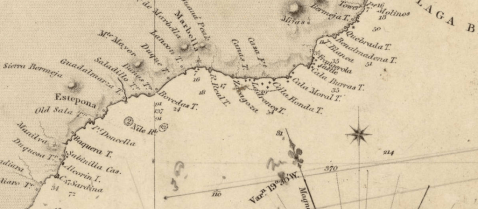Torremuelle, old watchtowers of Benalmadena
The Torre del Muelle de Benalmádena is also referred to as Venalmaina, Balalmayna, Benad Mádena, Bednadmádena, Benalmádana, Venalmádana, Venalmádena and Velalmaina.
It lends its name to the urbanization that today surrounds, although its elevated position means that it is still visible from the road.
It is located on a mound that drops steeply down to the beach and overlooking two small inlets. Its surroundings are landscaped and there are currently no nearby obstacles limiting its view. It is very close to the N-340 coast road and about 2 km from the Casino Torrequebrada.
The tower is the truncated cone shape formed on a circular base. Its approximate perimeter is 23.80 meters with a height of more than 10 meters. The bases have a diameter of 7.65 and 5.70. Its conservation is good. It has a solid lower body and a preserved upper chamber whose access on the north side is 7 meters from the ground. It was constructed in 1575.
The roof has a uniform parapet with holes demonstrating, along with some protruding elements the primitive machicolations that were once in the wall. The parapet is finished with a slope towards the exterior.
Its construction is of masonry with the use of brick in the exterior hollows and in the vault ceiling of the interior chamber. Its walls are plastered.
The observation opening is located on the south side of the tower and at approximately the same height as entrance.
Torremuelle has been an important ship anchorage since ancient times, as evidenced by the underwater remains and the nearby Villa Mauritania. During the construction works of the coast road, important Roman remains were found.
Documents that predate the tower, show that this area was just called "Muelle", without any reference to the watchtower.
Coastal Watchtowers
There have been about 200 watchtowers or forts build along the coast of Southern Spain. All with the purpose of looking out for invaders from the South. Some of the watchtowers seen today are Moorish origins, mainly constructed by the Nasrid dynasty of Granada after 1250. Most of the present wachtowers were constructed around 1575
Over half the towers constructed have lasted to the present day; both due to their remarkable solid construction and due to being in use up to the middle of the 20th century. There are about 10 different architectural constructions. The towers that are Moorish are identified from being cylindrical or rectangular in shape with vertical walls, whereas the majority were constructed (or reconstructed) in the major coastal defence programme of King Filipe II in 1575 are slightly conical in shape.
After 1518 attacks by Barbary pirates, (also known as Barbary corsairs, or Ottoman corsairs) based in North Africa and acting on behalf of the Ottoman Sultan. Initially the pirate raids concentrated on shipping but escalating to land raids. They were slave-hunters, and their methods were ferocious, capturing young people for the Ottoman slave trade.
Read the full account of the Coastal watchtowers.
Benalmadena Watchtowers
Benalmadena has three watchtowers and one fort that remains to this day. From west to east.
Torre Vigía de Torremuelle in Torremuelle district.
Torre de Torrequebrada in Torrequebrada district.
Torre Bermeja on Avenida del Alay.
Location
On the headland ovelooking Playa Torremuelle. In the centre of a housing estate. Pedestrian access to the tower and gardens from Avenida de la Torre.
